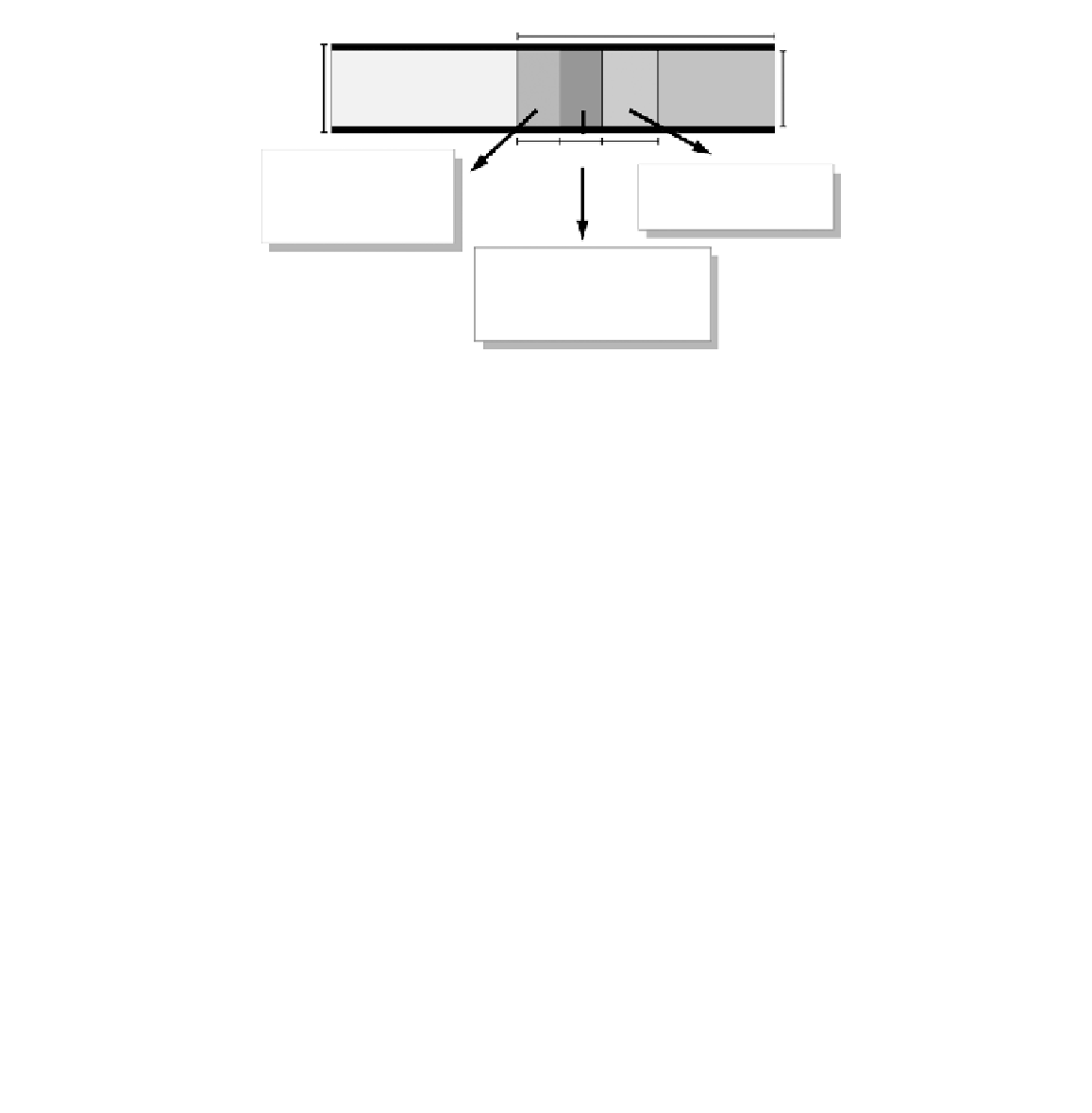Biomedical Engineering Reference
In-Depth Information
0.09 mm
Gold
15
m 15
m
20 m
Sensing layer
glucose oxidase 110 ng
PVI
13
-dme-Os 552 ng
peg 42 ng
Biocompatible layer
(polyethylene oxide)
PEO/TA 885 ng
Mass transport limiting layer
EAQ
PVPA
PAZ
560 ng
26 ng
62 ng
FIGURE 3.5
Design of an implantable three-layered glucose biosensor for subcutaneous monitoring
(based on [15]).
continuously functioning devices, possessing adequate (
1 week) stability, are expected
in the near future. Such devices would enable a swift and appropriate corrective action
(through a closed-loop insulin delivery system, i.e. an artifi cial pancreas). Algorithms
correcting for the transient difference (short time lag) between blood and tissue glucose
concentrations have been developed [38]. The CGMS unit of Medtronic Minimed Inc.
(Sylmar, CA) offers a 72 h period of such subcutaneous monitoring, with measurement
of tissue glucose every 5 min and data storage in the monitor's memory [39]. After 72 h,
the sensor is removed, and the information is transferred to a computer for identify-
ing patterns of glucose variations. In addition to easily removable short-term implants,
efforts are continuing towards chronically implanted devices (aimed at functioning reli-
ably for 6-12 months). A similar system is currently being developed by Abbott Inc.
[40]. This system is based on the wired enzyme technology of Heller's group (Fig. 3.5),
an insertion of a short needle into the skin, to yield a reading every minute. Both the
Abbott and Minimed devices include a limited range transmitter that relays the sensor
data to a pager-like device that provides the necessary warnings and stores the data.
Additional devices based on patch-like sensors, nano-needles or microdialysis sampling
are currently being developed by different companies.
3.6.3 Towards non-invasive glucose monitoring
Non-invasive glucose sensing is the ultimate goal of glucose monitoring. Such a non-
invasive route for continuous glucose monitoring is expected to obviate the challenges
of implantable devices. In particular, Cygnus Inc. has developed a wearable glucose
monitor, based on the coupling of reverse iontophoretic collection of glucose and bio-
sensor functions [41]. The GlucoWatch biographer provides up to three glucose read-
ings per hour for up to 12 h (i.e. 36 readings within a 12 h period). The system has
been shown to be capable of measuring the electroosmotically extracted glucose with





Search WWH ::

Custom Search